What Causes Floods: Natural and Human Factors You Should Know
What causes floods? Do you think natural factors or human factors will be the main causes of floods? Keep reading this post to understand this natural disaster deeply. Weather365 is going to introduce you to the definition, types of floods, as well as causes of flooding.
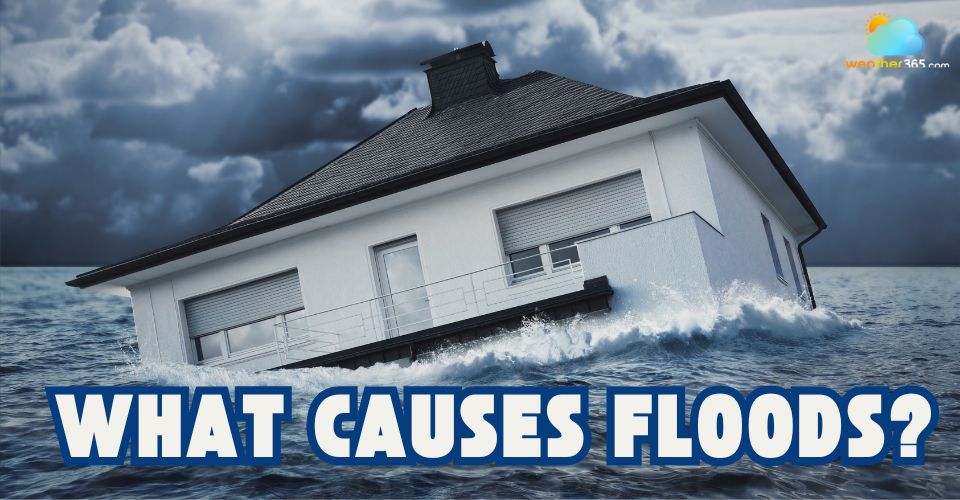
What is cause of flood?
What is a flood?
A flood is an overflow of water that submerges land that is usually dry. It occurs when water from rivers, lakes, oceans, or heavy rainfall exceeds the capacity of natural or artificial barriers, such as riverbanks or drainage systems.
They often lead to property damage, displacement of people, and loss of life.
Flooding is a natural disaster that affects communities worldwide, requiring effective management and preparedness to reduce its impacts.
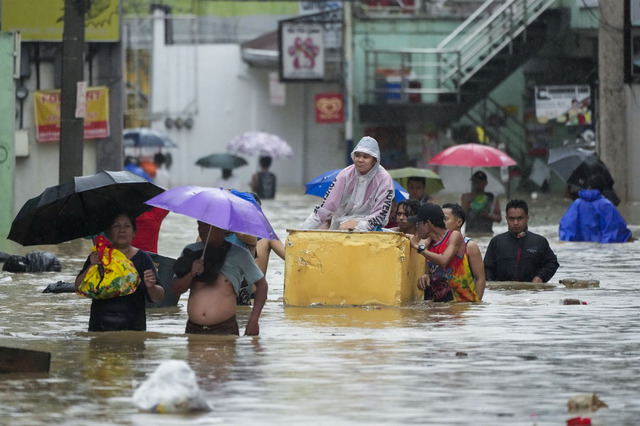
Definition of flooding
Types of flood
Floods are classified into 5 types, each has distinct characteristics:
Flash Floods:
These are sudden, intense floods occurring within six hours of heavy rainfall or rapid snowmelt.
Flash floods typically affect low-lying areas such as dry riverbeds, washes, and urban streets, often with little warning.
They can result from severe thunderstorms, hurricanes, dam failures, or the collapse of ice or debris dams.
Flash floods are especially dangerous because of their speed and destructive power. Flash flooding can carry debris, uprooted trees, and destroy infrastructure on its path.
River (Fluvial) Floods:
These floods happen when rivers or streams overflow their banks due to prolonged heavy rains, snowmelt, or upstream thunderstorms.
They tend to develop more slowly than flash floods and usually affect wider floodplains, leading to extensive but often less sudden inundation.
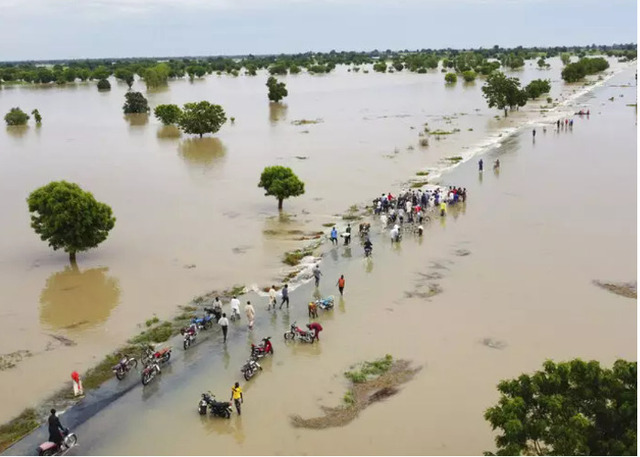
River flood
Coastal Floods:
Caused by storm surges from hurricanes or tropical storms, coastal floods push seawater onto low-lying coastlines.
High tides combined with strong winds can increase flooding severity, threatening coastal communities.
Urban Floods:
Heavy rainfall overwhelms urban drainage systems, especially when clogged or inadequate.
Impervious surfaces like roads and buildings prevent water absorption, causing water to accumulate on streets and in buildings rapidly.
Pluvial Floods:
These occur when intense rainfall saturates the ground, and surface runoff accumulates in areas with poor drainage.
Unlike river floods, pluvial floods are not dependent on nearby water bodies but occur due to excessive rain overwhelming local drainage capacity.
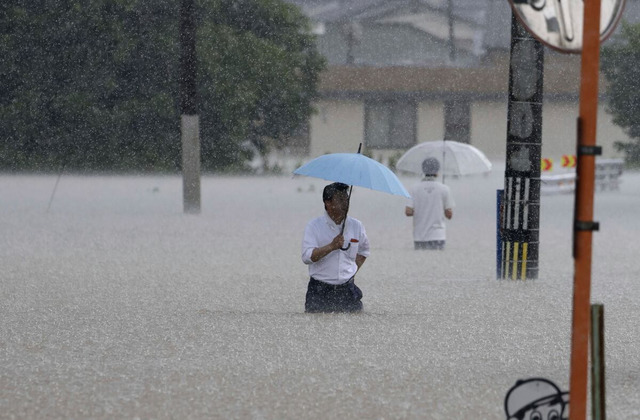
Pluvial flood
You may also like this:
What causes floods?
Floods are caused by a variety of natural and human factors, often acting in combination. The main causes include:
-
Heavy or Prolonged Rainfall:
When rain falls faster than the ground can absorb, excess water runs off into rivers, lakes, or urban areas, quickly raising water levels and causing floods.
Saturated soil from prolonged rain worsens runoff.
-
Rapid Snowmelt:
Warm weather or rain can cause snow to melt rapidly, releasing large volumes of water into rivers and soil.
It often exceeds their water capacity and leads to floods.
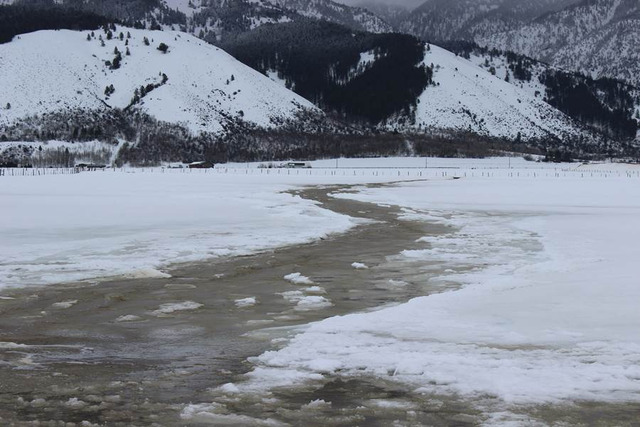
Rapid snowmelt causes flooding
-
River Overflow:
Rivers flood when upstream water flow surpasses their banks, overflowing into surrounding floodplains.
This often occurs during heavy rains, snowmelt, or blockages downstream.
-
Coastal Floods and Storm Surges:
Strong winds from hurricanes or storms push seawater inland, raising coastal water levels and flooding low-lying areas, especially during high tides.
-
Dam or Levee Failures:
Failures of dams or levees release huge amounts of water suddenly downstream.
It causes destructive and rapid flooding with little warning.
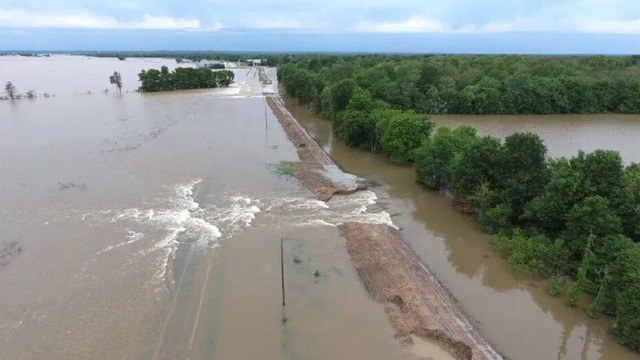
Levee failures causes flooding
-
Urbanization and Poor Drainage:
Concrete and asphalt prevent water absorption, increasing surface runoff in cities.
Poor storm drainage systems then cause flooding on streets and properties.
-
Environmental Degradation:
Deforestation, wetland loss, and poor land management reduce natural water absorption, leading to more runoff and higher flood risk.
-
Ice Jams:
Ice blocks can form temporary dams in rivers, causing water to back up and flood upstream.
When these jams break, they send sudden floods downstream.
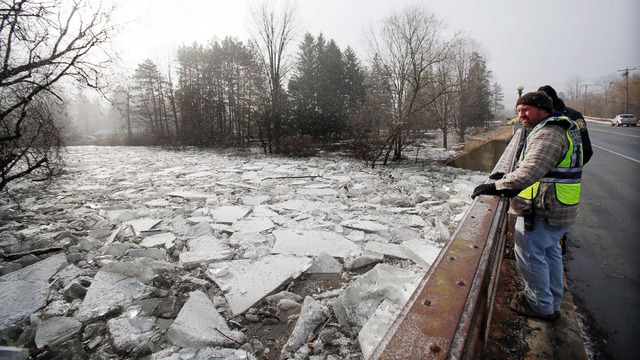
Ice jams cause flooding
Effects of floods
Between 1998 and 2017, over 2 billion people worldwide were affected by floods.
These water events are increasing in number and severity.
Floods, especially flash floods, can destroy homes, infrastructure, and essential services like hospitals.
It leads to loss of life and disruption of communication and power.
Economically, floods damage key industries such as agriculture and tourism.
According to many recent studies, frequent floods can potentially reduce regional GDP by up to 11% by century’s end, and we can take several years to recover.
Vulnerable populations living near rivers and in monsoon-prone regions, particularly in South and Southeast Asia, face significant risks.
It also contributes to mass displacement and overcrowding in cities. This displacement exacerbates social inequalities and can lead to long-term instability.
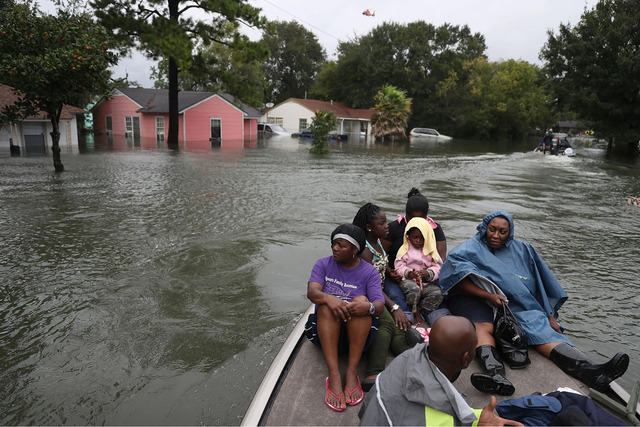
Effects of flooding
What can do to protect against floods?
Flood preparedness is crucial for protecting lives, property, and livelihoods. A recent Red Cross study revealed that 70% of UK adults haven’t taken steps to prepare for emergencies like flooding. This can leave many vulnerable.
Proper preparation includes simple steps such as knowing your flood risk, flood warnings, having an emergency plan, keeping a flood kit, and securing insurance.
It’s crucial to prepare for flooding. It can reduce damage, speed up response, and support faster recovery.
Without these measures, floods can cause severe health, financial, and social impacts. Increasing awareness and action at both the individual and community levels is essential to build resilience against growing flood risks.
Here are some flood safety tips you should remember.
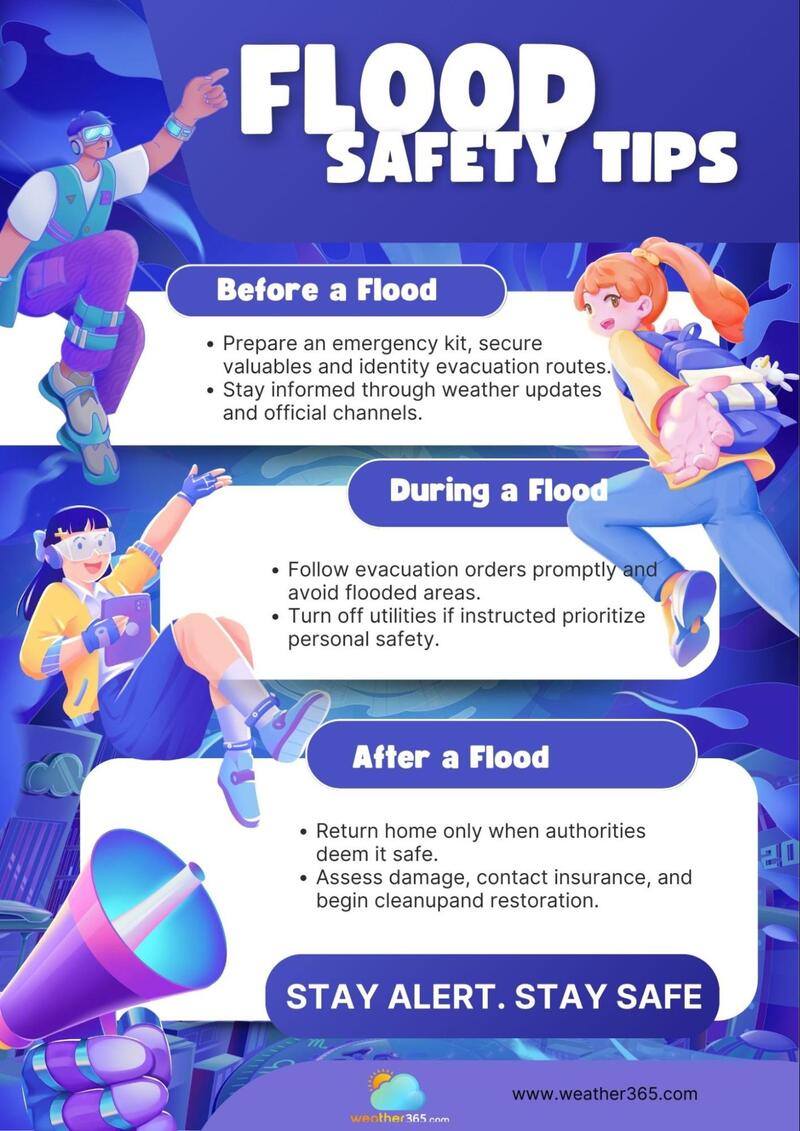
Flood safety tips
In conclusion
Understanding “what causes floods”, types, and its effects is essential for implementing effective ways to minimize the impacts of this natural hazard. Follow Weather365 to know more useful information about floods, hurricanes, and other disasters.

0 Comment
Leave a comment
Your email address will not be published. Required fields are marked *